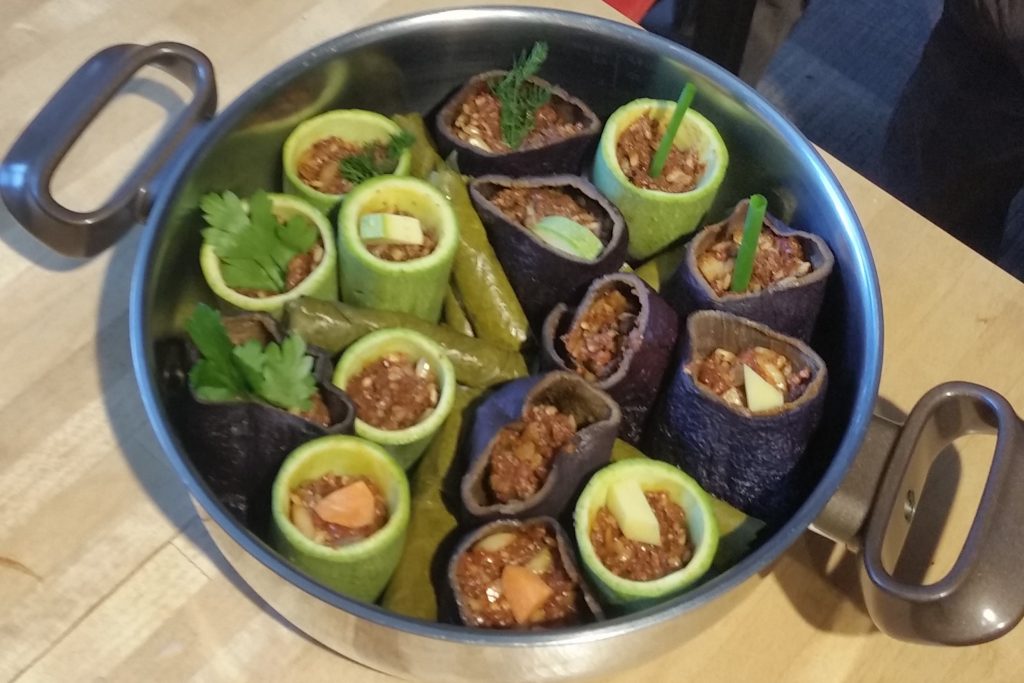I love aubergines, and there were some great aubergines in the shop the other day, so I was inspired enough to order some quinces from Real Foods, a wholefood supplier in Edinburgh. I nearly didn’t post this recipe, because quinces aren’t something that is readily available, but it was excellent. The recipe is from one of my favourite recipe books, Nightingales and Roses. I didn’t follow the recipe exactly because the weather was nasty, time was of the essence and I discovered I didn’t have enough onions.
I used a bit of leg of mutton to make this, and cooked it quite slowly. I did it in two stages as I was cooking for others after work. The stew itself is very easy, everything is layered into one pot and simmered. I find that preparing stews in the evening, and then finishing the cooking the next evening works well for developing the flavours. I should imagine it would work well in a slow cooker.
INGREDIENTS:
- 4 tbsp olive oil
- 4 onions, peeled and thickly sliced (should have been 6 – see above)
- 600g thick slices of mutton or lamb
- 1 1/2 tbsp sumac (this gives the stew a wonderful dark colour)
- 1 tsp ground turmeric
- 1/2 tsp salt
- 1/2 tsp ground black pepper
- 2 large aubergines, thickly sliced and salted
- 4 cloves of garlic, sliced
- 1 large quince, peeled and chopped, core removed
- 200g cherry tomatoes, halved
- 60ml water
- 1 tbsp tomato puree
- 2 large potatoes, thickly sliced. (I added these on the next day when I heated the stew up and finished the cooking.)
METHOD:
- Pour half the oil into the bottom of a casserole dish or large saucepan, and arrange half of the onion slices on the bottom. Next, layer in the meat slices.
- Mix the sumac, turmeric, salt and pepper, and sprinkle a third of this over the meat, and then add the rest of the onions.
- Rinse any salt off the aubergines and arrange them on top, then the garlic slices and another third of the spice mix.
- Add the sliced quince, then top this with the rest of the spice mix and the chopped tomatoes.
- Mix the water with the tomato paste and the rest of the oil, whisk to combine, and pour over the top.
- Cover tightly and cook on a low heat for an hour and a half (I cooked for two hours on account of using mutton). (At this point I turned off the heat and went to bed.)
- Remove the lid and add the potato slices, and spoon some of the gravy over the top. Continue to simmer for a further half hour until the potatoes are tender and most of the gravy has cooked down.
- Sprinkle with a pinch of sumac, and serve with bread and a little light salad.
